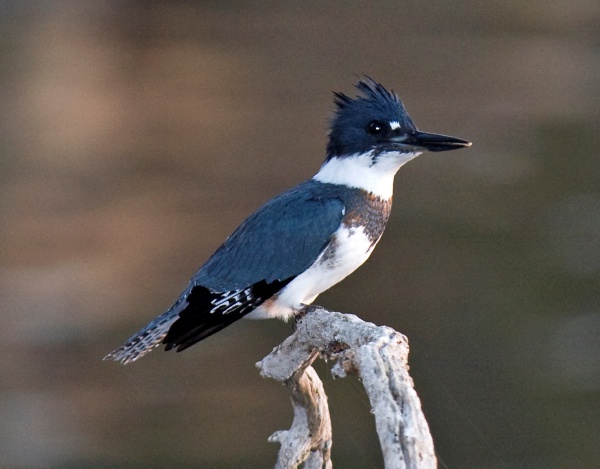Facts About Belted kingfisher
The belted kingfisher is a striking bird native to North America and even features on the Canadian $5 note. Recent studies suggest that the kingfisher family might be divided into three subfamilies, reflecting its diverse lineage. This bird was first formally described by the renowned naturalist Carl Linnaeus in 1758. The genus *Megaceryle*, which includes the belted kingfisher, was later established by Johann Jakob Kaup in 1848. Interestingly, the belted kingfisher is closely related to the ringed kingfisher, and they likely share an African ancestor that migrated to the Americas.
Physically, the belted kingfisher is a medium-sized bird with a robust build, measuring between 28 and 35 cm in length and weighing between 113 and 178 grams. Unlike many bird species, female belted kingfishers are more brightly colored than males. Both sexes sport a slate-blue head, a prominent white collar, and a blue band across the breast.
These birds prefer to breed near inland bodies of water and along coastlines throughout North America. During the winter, they migrate to warmer areas like the southern United States, Mexico, and Central America. Belted kingfishers are known for their unique nesting habits, digging horizontal tunnels into riverbanks. Both parents share the responsibility of incubating the eggs and feeding the chicks.
You’ll often spot a belted kingfisher perched near water, ready to dive headfirst to catch fish, amphibians, crustaceans, and other small prey. Their nest tunnels are cleverly designed to slope uphill, likely as a defense against flooding. In warmer regions, the belted kingfisher is a year-round resident, but they migrate south when northern waters freeze. Occasionally, they even appear as rare visitors in different parts of the world.

 Mexico
Mexico